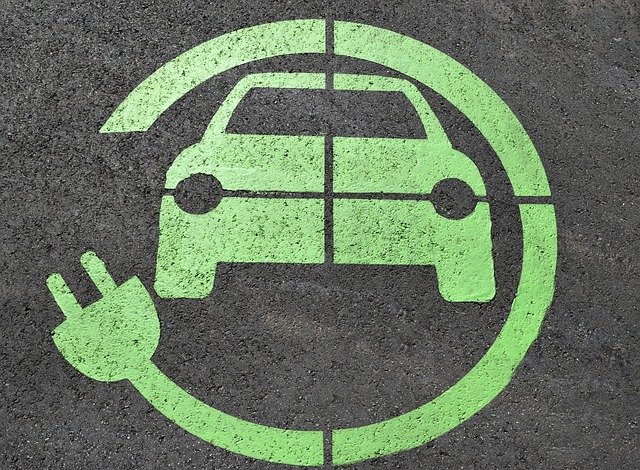
Conspectus of Biomedical Waste Management
The COVID-19 pandemic has broachedumpteen pervasive challenges on multiple fronts- health, environment and economy. Although the economy is restoring to an extent but an exponential escalation in the biomedical waste generation has posed severe persisting health hazards and environmental threats. The untreated and improperly managed biomedical waste comprising of personal protective equipment (PPE), face masks, face shields, gloves, plastic coverall, head cover, hazmat suit, shoe covers, syringes and miscellaneous medical equipment used by the patients and healthcare workers has the potential of spreading various types of infections.[1] Due to dearth of resources, under-reporting of cases, lack of awareness, poor segregation and flawed biomedical waste management system, India has continued to face severe consequences during the pandemic.[2]Since March 2020, the Central Pollution Control Board (CPCB) has issued periodic guidelines under the
Biomedical Waste Management Rules 2016 and analyzed them to ensure that COVID-19 detritus is collected with uttermost care and transported to “biomedical waste treatment and disposal facilities”, precisely contrived to handle biohazardous waste from health camps, hospitals, morgues, clinical and pathological labs, and other medical activities and establishments. The Biomedical Waste Management Rules 2016 entail the healthcare facilities to follow a color-coded segregation structure for waste disposal and hand it within 48 hours over to treatment facilities. Earlier, the nation had ten divergent classes of waste for segregation which was later condensed into four categories for facile segregation. Infected or potentially contaminated waste is tabbed as yellow, ostensibly recyclable and non-infected fall in the red category, sharp and small metallic items are categorized under white bracket whilst waste comprising of glass is segregated into the blue category.
An appreciable fragment of the waste at the treatment facilities that comes in blue and red bags or in white containers is channelized for recycling after sterilization. A small amount of waste, especially pathological and laboratory waste that comes packed in yellow bags is sent for incineration. Although the healthcare institutions follow the protocol pertaining to COVID-19 waste disposal but there is no such segregation rule in place for the home quarantine centers.
Waste processing and treatment has an intense reliance on segregation of dross into multitudinous categories (biodegradable, recycling, bio-hazard, etc.). The ultimate disposal of trash is also a big obstacle provided the lack of planning of land-fills sites. Initially, these sites were lay aside from the cities to prune deleterious effects to inhabitants. Nevertheless, with the augmentation of cities, these sites now fall within city perimeters, thereby, exposing the inhabitants to health menaces and other environmental threats. Policymakers, researchers and practitioners have long-lauded digital technologies, such as artificial intelligence for material recognition or smart waste containers and robotic automation, as fundamental enablers to more efficient and effective waste management.
Smart Waste Management: PWC& AWCS
Smart Waste Management can succor us in combating against the COVID-19 pandemic to minimize the infection risk and contribute public health. A pneumatic waste collection system (PWC) or automatic waste collection system (AWCS) is a sustainable and smart management system alternate to conventional waste collection panaceas which thoroughlyforgoes manual handling and contact with trash, which is beneficial for the city, public and the environment. The rudimental constituents of any AWCS involve the depositing of waste bags into a bin or inlet door (generally called waste loading station) which are then carried with vacuum and airflow through a pipe network to a waste transfer station where trash is an introduce in radically sealed containers.
The AWCS is operated by a control system and is accessible24/7/365. MariMatic Oy has set upPneumatic Waste Collection 4.0 and is endowing waste loading stations with absolutely touchless automated opening/closing doors wherein no human touch with the waste disposal points is involved. With PWC 4.0 there is no any additional contact between a dropped trash bag until it reaches the final destination, i.e., sorting or recycling plant thereby it ensures the safety for the waste workers. Although PWC 4.0 cannot knock out the pandemic but as a smart waste management solution, it can certainly assist in the fight and minimize the risk of exposure to the virus.[3]
COVID-19 Biomedical Waste Tracking App
Back in May 2020, CPCB launched an application, i.e., COVID-19 Biomedical Waste Management (BWM App) to traceprecarious COVID-19 bio-medical waste. COVID19BWM is a software app for monitoring the generation, collection and disposal of COVID-19 bio-medical debris, engendered at numerous health care facilities, isolation wards, quarantine centers, COVID-19 sample collection centers, testing labs and urban local bodies involved in performing the duties of waste collection from homecare units and home quarantine centers. It permits exchange of information between several stakeholders involved.[4]The application can track the life cycle of debris right from collection, segregation and transportation to incineration by geo-tagging every process and submitting details on a common platform wherein all waste generators, transporters and those handling treatment facilities will be asked to register themselves.[5]Based on the report submitted by the Environmental Pollution (Prevention and Control) Authority, the Apex Court passed an order in July 2020 which made reporting via BWM App obligatory. Nonetheless, very few have registered themselves on the app till now, and even fewer are reporting on a frequent basis.[6]
Smart Waste Bins
Biocrux India has established a collection contraption for COVID-19 rubbish. The Internet of Things (IoT) enabled large Smart Bin comes with three automatically modulated mouths that open and close by touch screen directives and waste type selection. The receptacles with capacities of 420 litres, 200 litres and 220 litres are designated for sanitizer bottles, face masks and PPE kits/flexibles respectively. The motorized gate unfastens and fastens ensuring no dumping or spilling, the IoT based connect with each machine tracks its usage with login and password. In few instances, smart waste bins have interactive screens to assist the users to manage their trash better and thereby making them more mindful of their detritus. When the receptacle is full, the sensor on the machine apprises the central clearance system so that a specialized biomedical waste pick up van can address to the contents. The smart bin is appropriate for collection of COVID rubbish in corporate offices, housing societies, hotels, commercial markets and for Smart Cities.[7]
Internet of Things (IoT) driven waste management
The conventional waste management process commences with waste being precipitated by inhabitants in towns and discarded in bins at the point of creation. At a preordained timetable, municipal department trucks accumulate the waste and transport it to the recycling centers. The conventional mode of manually monitoring the garbage in bins is a time-consuming process that not only requires more time, human labor and money but also poses safety concerns for the waste workers which can be obliterated with existing technology. The IoT- driven waste management solutions executed in Smart Cities usually comprise of endpoint devices (sensors), gateways, cloud platforms, and mobile and web applications. Smart Waste Management System is purposive to be developed to trounce the waste collection issues in smart city as it provides timely garbage collection and ensures augmentation in overall productivity and cleanness. IoT succor cities truncate frequency of bin collections, cut carbon emissions, and grossly diminish waste management costs.[8]
The IoT- enabled COVID waste collection and transportation can bring in remarkable benefits in the gross application of waste management solutions. Deployment of smart bins, tracing of trash pickup trucks and also the sanitation workers, route optimization for trucks, cross-checking of garbage weight etc. can constructively address the challenges of enforcement and transparency. Correspondingly, IoT- enabled sensors can also track the amount of alternative fuel generated from the processed waste. IoT- enabled solutions can also succor in sorting out waste at the time of waste generation, thereby bringing in notable value to the rest of the lifecycle phases.[9]
Using Artificial Intelligence to sort and segregate waste
The use of AI applications like machine vision can succor automated systems differentiate between different types of debris. They can then categorize it more constructively and lay out insights into areas’ disposal practices. Corporations can then ensure they are reprocessing all they can and eschew environmentally perilous bloomers.[10]
Conclusion:
Globally, almost all nations are pivoting efforts towards coherent modes of biomedical waste management, with a specific emphasis on parlous waste management. The fundamental principle of good biomedical waste practice is based on the notion of 3Rs, namely, reduce, recycle, and reuse. The numerous modes of biomedical waste disposal, according to their desirability, are preclude, reduce, reuse, recycle, recover, treat, and lastly dispose. The diverse technologies for biomedical waste disposal are categorized into four groups: thermal, chemical, irradiative and biological processes.[11]The sustainable and safe management of biomedical waste is both a legal and social responsibility of everyone financing and supporting healthcare activities. The waste management workers, chiefly those in waste collection must be guarded by any potential infection by the waste streams. Therefore, there is a need to intensify awareness amongst the general public to enforce segregation at source and incorporate smart waste management techniques.
[1] DRISHTI IAS, https://www.drishtiias.com/loksabha-rajyasabha-discussions/the-big-picture-biomedical-waste-management-during-covid-pandemic (last visited Aug. 11, 2021).
[2]Chand & Shastry, Updates on biomedical waste management during COVID-19: The Indian scenario, 11 CEGH 1,1, (2021).
[3] BEE SMART CITY, https://hub.beesmart.city/en/solutions/covid-19-and-rethinking-smart-waste-management (last visited Aug. 12, 2021).
[4] CPCB, https://cpcb.nic.in/uploads/Projects/Bio-Medical-Waste/V1_COVID-19_BMW_Tracking_App.pdf (last visited Aug. 12, 2021).
[5] Anonymous, App to track ‘hazardous’ COVID-19 bio-medical waste, THE NEW INDIAN EXPRESS (May. 9, 2020, 08:05 AM), https://www.newindianexpress.com/states/telangana/2020/may/09/app-to-track-hazardous-covid-19-bio-medical-waste-2140997.html
[6] DOWN TO EARTH, https://www.downtoearth.org.in/news/waste/covid-19-will-place-india-s-biomedical-waste-management-under-terrible-strain-77714 (last visited Aug. 11, 2021).
[7] Preeti Mehra, Deliver us from COVID-19 waste, THE HINDU BUSINESSS LINE (June. 2, 2020), https://www.thehindubusinessline.com/specials/clean-tech/deliver-us-from-covid-19-waste/article31729204.ece
[8] SOFTEQ, https://www.softeq.com/blog/how-smart-cities-are-leveraging-iot-for-waste-management (last visited Aug. 12, 2021).
[9] DQINDIA, https://www.dqindia.com/iot-enabled-smart-city-helps-tackle-problem-solid-waste-management-india/(last visited Aug. 12, 2021).
[10] HPG Consulting, https://www.hpgconsulting.com/blog/application-of-digital-technology-in-waste-management/(last visited Aug. 12, 2021).
[11] Priya Datta & Jagdish Chander, Biomedical Waste Management in India: Critical Appraisal, 10 J LAB PHYSICIANS (2018)



